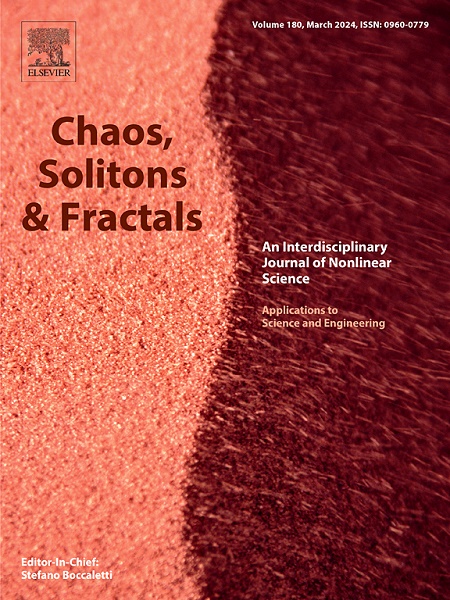Optimal magnetic stimulation strategy for absence seizures: Targeted therapy for PY and E in a neural mass model
IF 5.3
1区 数学
Q1 MATHEMATICS, INTERDISCIPLINARY APPLICATIONS
引用次数: 0
Abstract
Studies have shown that excitatory neurons play a crucial role in regulating seizures. We use an improved Wendling neural mass model to explore the effects of magnetic current stimulation on absence seizures. Firstly, we study the reciprocal excitatory projections between pyramidal neurons(PY) and excitatory interneurons (E), where the system appears in resting state, spike and wave discharge state (SWD) and simple oscillation state. Secondly, we apply magnetic stimulation to PY and E, independently. During PY-targeted magnetic stimulation, the gradual disappearance of the unstable region in the bifurcation diagram suggests that appropriate magnetic stimulation effectively suppressed seizures. During E-targeted magnetic stimulation, the backward shift of the Hopf bifurcation curve suggests that appropriate magnetic stimulation is capable of inducing resting state in the physiologic range of epilepsy. Finally, in order to find a stimulation strategy with the least stimulation intensity and the best effect, we target the magnetic stimulation in ratio to PY and E. By comparing the stimulation efficiency and the minimum magnetic stimulation intensity, we confirm that the optimal magnetic current ratio strategy for seizure suppression is . This finding reveals the intrinsic nature of epileptic discharge states through bifurcation analysis. The study provides feasible suggestions for magnetic flow in the treatment of absence seizures.

求助全文
约1分钟内获得全文
求助全文
来源期刊

Chaos Solitons & Fractals
物理-数学跨学科应用
CiteScore
13.20
自引率
10.30%
发文量
1087
审稿时长
9 months
期刊介绍:
Chaos, Solitons & Fractals strives to establish itself as a premier journal in the interdisciplinary realm of Nonlinear Science, Non-equilibrium, and Complex Phenomena. It welcomes submissions covering a broad spectrum of topics within this field, including dynamics, non-equilibrium processes in physics, chemistry, and geophysics, complex matter and networks, mathematical models, computational biology, applications to quantum and mesoscopic phenomena, fluctuations and random processes, self-organization, and social phenomena.
 求助内容:
求助内容: 应助结果提醒方式:
应助结果提醒方式:


